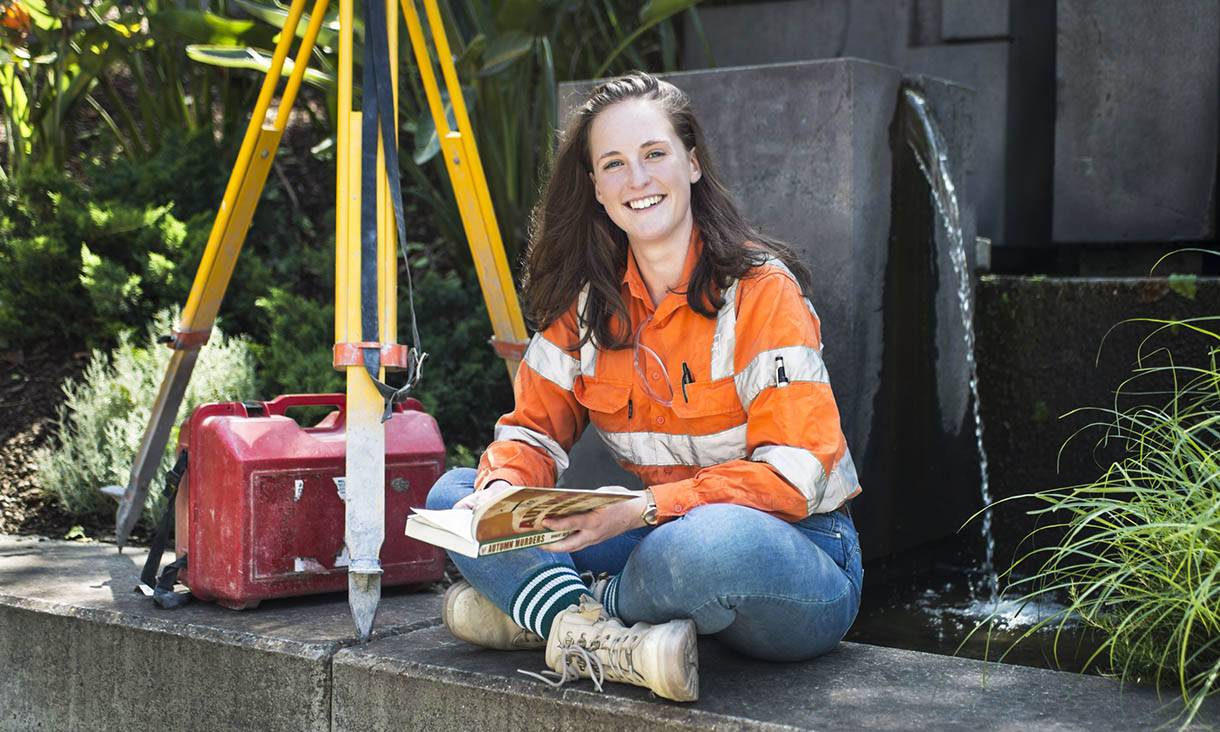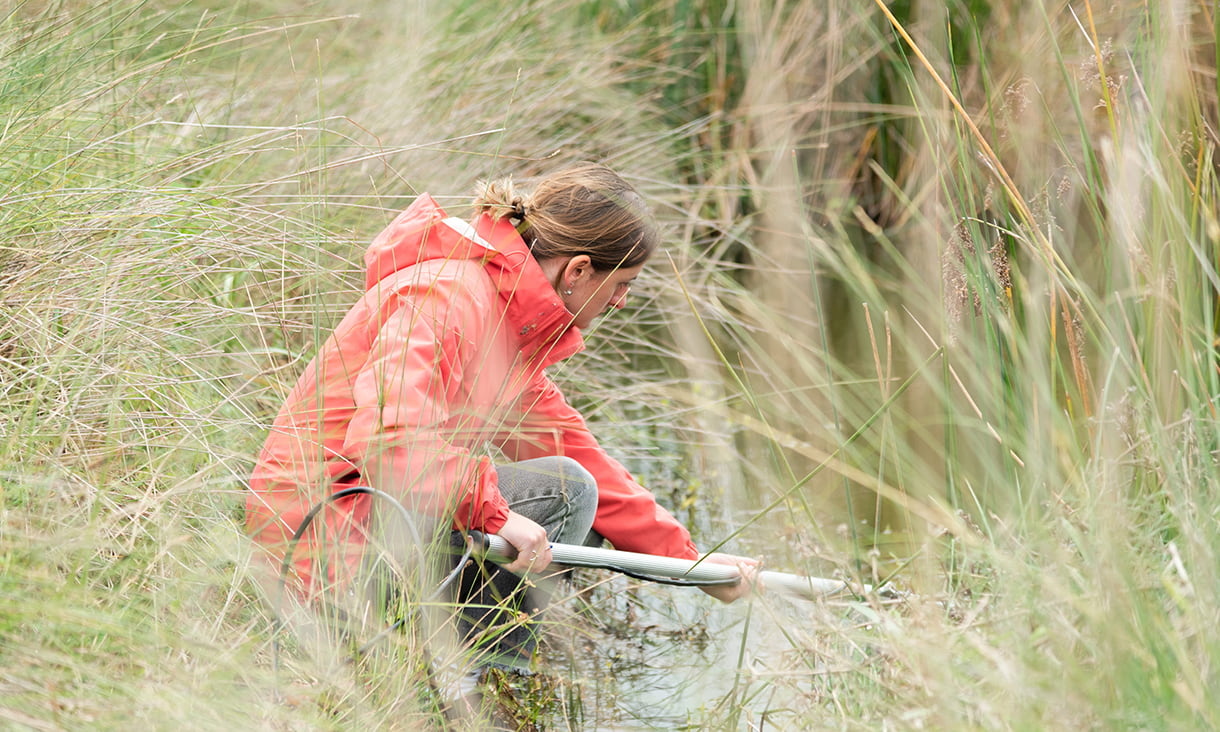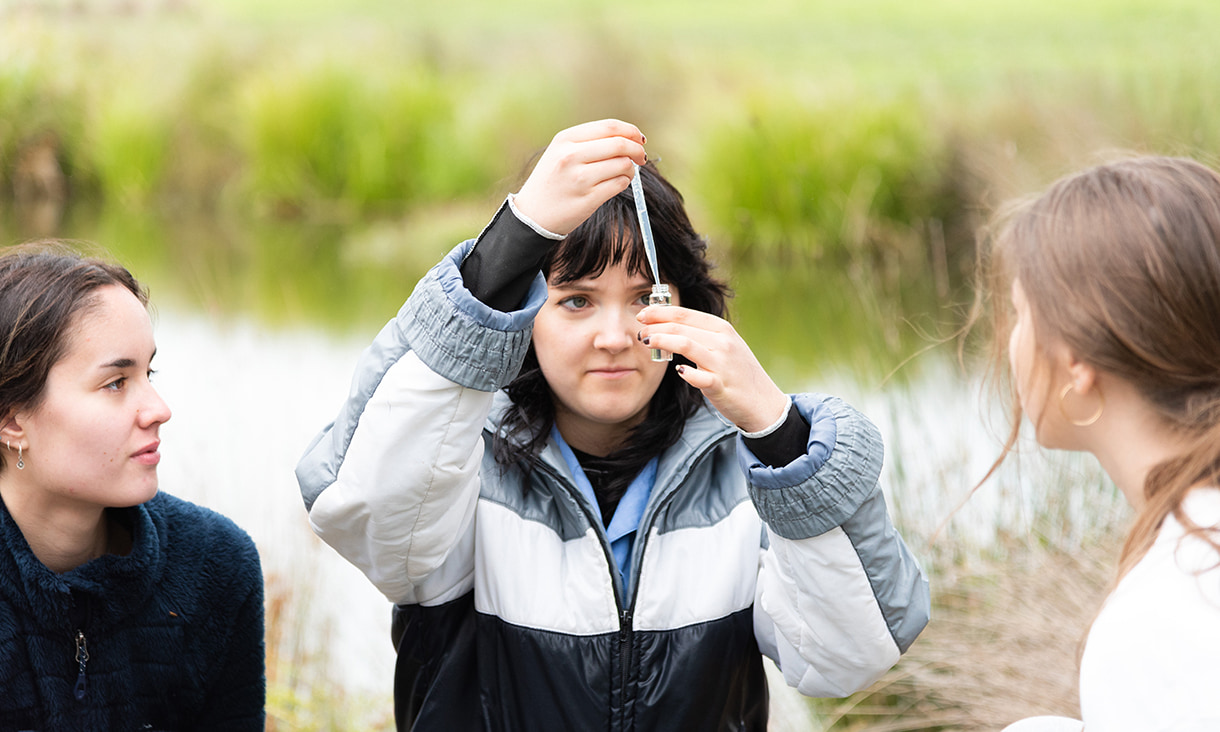Hear how these RMIT scientists have built rewarding careers in science and taken their skills beyond the lab.
Scientists aren’t just brainy people in lab coats and safety glasses: they’re adventurers and innovators, collaborating with experts from many different industries on projects that contribute to real change. Environmental or geospatial scientists can travel the world exploring connections between people and the environment, while researchers in biophysical chemistry come up with solutions to some of the most pressing problems in the world.
Science at RMIT is rich and varied: spanning data and technology, health and medicine, the environment and so much more.
Today’s scientists need creative thinking, flexibility and innovation to explore new theories and solve some of the most pressing problems in the world right now, like climate change, COVID-19, food security and antimicrobial resistance.
Here are three career paths in science that span beyond the lab.
 “I wanted a career that would be an adventure, and keep me thinking,” — Grace Mulcahy, Bachelor of Applied Science (Surveying) (Honours)
“I wanted a career that would be an adventure, and keep me thinking,” — Grace Mulcahy, Bachelor of Applied Science (Surveying) (Honours)
Be an adventurer with a career in surveying and spatial science
Ever heard of surveying? Surveyors determine boundaries and features of land, marine floors and underground works, using maps, charts and other tools of geography to conduct their surveys. Surveyors work in the field of geospatial science, collecting and analysing data about the community and the environment so they can predict patterns and trends.
Job opportunities for surveyors are also growing due to a current shortage of qualified professionals. The Australian Government’s Job Outlook noted a “very strong growth” in demand for Surveyors and Spatial Scientists in the last five years.1
When Grace Mulcahy, student of the Bachelor of Applied Science (Surveying) (Honours), was growing up she knew she wanted to be an explorer or a scientist.
“I wanted a career that would be an adventure, and keep me thinking,” Mulcahy says.
“I first learnt about spatial science when I attended a careers fair in my town and met some surveyors who shared their stories with me. It was love at first sight! I knew that the variety of indoor and outdoor work, the global opportunities for a skilled surveyor, and the blend of heritage and technology would lead to a unique career of lifelong learning.
“I chose to study at RMIT because there’s a range of pathways for surveying and geospatial degrees, and the program structure emphasises practical learning and connecting with professionals in the industry.”
Mulcahy is the president of the Geospatial Science Student Association, and says it’s been a highlight of her time at university.
“I’ve been able to connect with industry and academics through the club, and the friends I’ve made have been my support network after I moved far away from my hometown.
“As a young surveyor, I want to take the opportunity to try new things. There’s some incredible spatial technology emerging, such as drones and driverless vehicles, and research into how spatial data can be used to monitor ecosystems or natural disasters.
“The concepts of community and land will be changing as we learn to live in a post-COVID-19 Australia, and the surveying profession will play an important role in helping communities recover from the crisis. I hope I can contribute too.”
“My advice to other students is to challenge yourself – science, engineering and maths subjects can sometimes feel daunting but once you find your niche, you’ll be surrounded by supportive and like-minded people.”
Study environmental science to understand the world
Environmental scientists contribute to a greener future by investigating what impacts the planet. They conduct research in the natural environment, gathering samples and observational data in the field and then analysing what they’ve found to create solutions to environmental issues.
Dr Samantha Grover is a lecturer in the Bachelor of Environmental Science, and a soil expert and environmental scientist. She researches the connection between soils, climate change and people, and is passionate about promoting diversity and STEM as a career for people who love to ask questions.
Grover sees curiosity as the driving force of most STEM professionals, and finds investigating and answering the questions of ‘why’ and ‘how’ the most enjoyable part of her occupation.
“As an environmental scientist, you get to explore the world and ask questions to better understand how the world works,” Grover says. “While you’re exploring, you’re also contributing to solutions and solving problems.”
 Environmental scientists contribute to a greener future by investigating what impacts the planet. They play important role in protecting and advocating for the environment.
Environmental scientists contribute to a greener future by investigating what impacts the planet. They play important role in protecting and advocating for the environment.
 Environmental scientists who graduate from RMIT University find employment in consultancies, government agencies, resource management, research and education, mining, and manufacturing.
Environmental scientists who graduate from RMIT University find employment in consultancies, government agencies, resource management, research and education, mining, and manufacturing.
Environmental scientists can travel far, and Grover’s research has taken her from Indonesia, where she studied the burning of tropical peat lands that contribute to the Southeast Asian haze, right into people’s backyards, researching home composing to help reduce household food waste and return critical nutrients to urban soils.
“Having an understanding of how soils work, the intricacies of soil chemistry, soil physics, and soil biology, is essential to ensuring that humans can continue to enjoy living on this beautiful earth.
“We need new ways of thinking and we need to bring people with different ways of looking at the world together in order to solve the wicked environmental and social problems that have arisen from our current socio-economic structures.”
Use your chemistry and maths skills to solve real world problems
Chemistry plays a big part in most areas of science and technology, and is integral to our understanding of technical and environmental challenges. Scientists in chemistry work with people from many other disciplines, like engineering, food sciences, natural resources, the environment, manufacturing and health, venturing out of the lab to collaborate on solutions to problems that have global significance.
Working in research involves collecting, organising and analysing information and experiments, to increase understanding of a topic or issue. Bachelor of Science (Biotechnology) student Miyah Awad says working on research projects has given her insight into what a career in research looks like and helped build her practical skills.
“Biotechnology is a field that is never stagnant, with new techniques and information utilised and learnt every day, and skills and knowledge in biotechnology are in extremely high demand, which makes it an attractive field to build a career in,” Awad says.
“I’ve been introduced to new X-ray analysis techniques, which will potentially be utilised in future research work that I complete, as well as developed my soft skills like communication and time management.”
Associate Professor Charlotte Conn is a lecturer in the Bachelor of Science (Applied Chemistry), who followed her early interest in chemistry from the UK to Australia and has found a winning combination of research and teaching.
“My research investigates the use of soft nanomaterials to improve the efficacy of protein and peptide-based drugs, including those needed to manage global antibiotic resistance,” Conn says.
“I work with soft nanoparticles that are based on structures we find in the body. They're biomimetic and we use them for delivering drugs based on proteins or peptides. Specialised drugs like these are the fastest growing sector of pharmaceuticals.”
The Bachelor of Science at RMIT allows you to explore your interests and specialise after your first year, with options in general science, biological science, physics or applied chemistry. Students get opportunities to work on research projects and practical activities, often in collaboration with industry partners.
Think outside the box and discover your own science journey at RMIT.
Story: Hilary Jones
1Australian Government’s Job Outlook website occupations page for Surveyors and Spatial Scientists. Accessed 16 November 2021. https://joboutlook.gov.au/occupations/occupation?occupationCode=2322